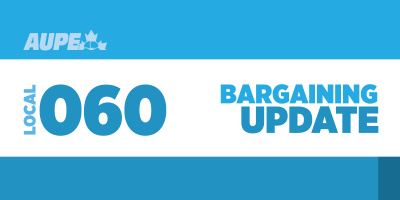To borrow a line from Scotiabank’s famous advertising tagline: The Alberta government is richer than you think.
We’ve seen the headlines about Budget 2025, full of woe about billions of dollars in deficits for the next three years.
The government is trying to fool you.
Premier Smith's government is manipulating figures so it can plead poverty. They want an excuse for keeping our wages low and underfunding public services.
The government is faking a deficit to explain why it refuses to increase staffing levels and pay public sector workers the wages we deserve.
AUPE members may need to strike to overcome the government’s scheme.
The financial facts
The government is low-balling how much revenue it will make from the oil and gas sector. They planned their budget – and three years of deficits – using oil and gas estimates that are well below expert predictions.
Here is what the budget would look like if the government used the same range of estimates for oil prices as other forecasters:
- 2025-2026: A surplus of $4.2 billion instead of a deficit of $5.2 billion.
- 2026-2027: A surplus of $4.7 billion instead of a deficit of $2.4 billion.
- 2027-2028: A surplus of $6.8 billion instead of a deficit of $2 billion.
We’ve seen this trick before. Last year, the government estimated a surplus of $0.4 billion, but ended up with a surplus of $5.8 billion.
The government says it can’t afford to pay AUPE members fair wages. But based on their budget, who could believe it?
If the government says it can’t afford to improve public services for Albertans, don’t believe it.
If the government says it can’t afford to hire enough workers to tackle staff shortages and worker burn-out, don’t believe that either.
The budget by department
Health
The government is breaking up Alberta Health Services, creating stress and significant changes for thousands of AUPE members and Albertans.
But how much does health care restructuring cost?
Well, you won’t find an answer in Budget 2025. Whatever the government is spending on breaking up AHS, it’s not listed in the budget.
Why would the government hide this information? Why not identify how much money is wasted on this ideologically driven change to our health care system?
The only information we have comes from leaked cabinet documents that surfaced in the fall of 2023. These show that changing the way health care is delivered would cost $15 million in 2023-2024 and $70 million in 2024-2025.
That much money would pay one year’s worth of wages for 1,529 new Licensed Practical Nurses (LPNs) or 2,030 Health-Care Aides (HCAs).
Imagine how far that would go to tackling the staffing crisis.
Relief is not coming. Overall spending on health and social services for 2025-2026 falls $776 million short of what we need to keep pace with population growth and inflation.
Government services
Budget 2025 will disappoint you if you had hoped for staffing increases in public services.
We’d need to see 129 more new FTEs in Government Services to keep pace with demand caused by population growth.
Rather than increasing staff numbers to cope with rising demand, there will be 10 fewer FTE jobs in Energy and Minerals; four fewer jobs in Environment and Protected Areas; and four fewer jobs in Immigration and Multiculturalism.
Shockingly, there will be no new FTEs in Children and Family Services, where the staffing crisis is so bad that 12,000 families are on a waitlist to get access to disability supports. Some have been waiting for more than two years.
Members of AUPE Local 006 have launched a campaign to tackle this crisis in care for Albertans with disabilities. You can add your voice to this campaign here.
Budget 2025 is also disappointing for all the AUPE members working in Alberta Wildfire. While the amount set for their total compensation increased by 4%, that represents a cut of 1.1% when accounting for population growth and inflation.
The Forestry and Parks ministry is set to grow by 38 FTEs, but staffing levels during peak wildland fire season are still below what they were in 2018-2019. This is despite the increasing risk of more frequent, more intense and uncontrollable wildfires predicted by the Canadian Forest Service in the coming years.
The Alberta government still struggles to recruit and retain wildland firefighters. This year, the full complement of seasonal firefighters will not be trained and ready to work until mid-May, well into peak fire season.
Education
We’ve already seen job cuts in post-secondary education, with the loss of more than 100 positions at Red Deer Polytechnic last month.
Budget 2025 shows a cut of 0.4% in government spending on post-secondary education this year, to $6.021 billion. While that reduction may seem small, the effects will be big. When inflation and population growth are factored in, this becomes a 5.2% total cut.
The province has reduced support for post-secondary institutions (PSI) for years. In fact, the Alberta government’s share of post-secondary spending has fallen by 23.1% since 2020-2021.
Alberta used to pay for 54% of spending by colleges and universities. Today, the government only funds 41.5% of their budgets.
This is the second-largest decline in support of any province in Canada. Only Newfoundland and Labrador is worse, while B.C. has actually increased its support by 20%, with a large share of that going to salary increases.
In the past, schools have increased tuition fees to meet the funding shortfall, but that door is closing. The Alberta government has put a 2% annual cap on domestic tuition increases.
Tuition caps are often praised for helping people afford schooling. This is true, but without additional funding to make up for those losses, post-secondary institutions struggle.
In K-12 education, funding also falls below what’s needed to keep pace with population growth and inflation. The Alberta Teachers’ Association says the government has shortchanged schools by $910 million this year.
According to Statistics Canada’s most recent figures, Alberta ranks lowest in spending per student in Canada, 16% below the national average.
If you think your child’s classroom are crowded now, brace yourself. It’s not going to get any better. In 2019, the government stopped sharing details on how many students were jammed into each classroom. It’s not hard to see out why.
There is lots of money available for private schools, however.
Private schools and early childhood education funding will increase by 30.1% in the next three years, nearly double the rate of population growth and inflation.
One might reasonably conclude that the government is underfunding public education so it can funnel taxpayer money to private schools.
Boards and Agencies
AUPE members working for boards and agencies have struggled in recent years. Budget 2025 gives no indication that more workers will be hired to meet the needs of Alberta’s surging population.
1,662 AUPE members worked in this sector in 2022, reduced to 1,509 by the end of 2024. For example, the number of AUPE members employed by the Alberta Gaming, Liquor and Cannabis Commission fell by 14.1% in 2024, from 818 to 703.
One exception to this is ATB Financial, which exceeded its forecasted revenue last year by $19 million, or 7%. 35 additional AUPE members now work at ATB.
Municipalities
There was good and bad news in the budget for AUPE members working for municipalities.
There are 311 AUPE members employed in Alberta's Ministry of Municipal Affairs, while 824 work for local governments and agencies whose finances are significantly influenced by the province’s municipal affairs budget.
The good news is that the budget fully restores the Grants in Place of Taxes (GIPOT) over the next two years. They had been cut in half by Jason Kenney’s government in 2019. Grants will increase from $38 million to $55 million in 2025-2026 and to $75 million in 2026-2027.
Most of this money will go to operations, which includes employee wages and benefits.
However, the government is discontinuing Local Growth and Sustainability Grants just one year after introducing them.
Funding for Family and Community Support Services (FCSS) is held at $105 million this year. When population growth and inflation are factored in, government funding has fallen by more than 50% since 2015.
These funds are used to support a variety of municipal social programs, including transportation for seniors and after-school programs for children.
What now?
Your provincial government is building a new website called “Affordable Advice for Life.” They think you need their tips on how to save your money.
Our advice: Workers should make fair wages.
The government will also spend $10 million more this year on its “Alberta is Calling” advertising campaign.
Our advice: Invest in the programs and public services new Albertans need before they arrive.
Budget 2025 is a disappointment, but we do not have to accept it as it is. We must demand better.
AUPE members will continue bargaining for the wages, benefits, and working conditions they deserve, regardless of the government’s misleading deficit.


